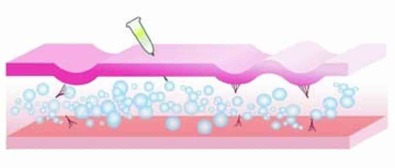Carboxytherapy- the CDT Evolution System
/ After performing Carbon Dioxide Therapy CDT for a long time with different technologies, I discovered that there are huge technology-dependent differences in the treatment itself. Since I tried out a new machine recently, I wanted to share my thoughts on one of them here.
After performing Carbon Dioxide Therapy CDT for a long time with different technologies, I discovered that there are huge technology-dependent differences in the treatment itself. Since I tried out a new machine recently, I wanted to share my thoughts on one of them here.
Carboxytherapy is a treatment that takes its origins from 'spa medicine' in the 1920s. In 1932 injections of medical CO2 were put into practice and the studies demonstrated a good effect on patients suffering from arterial problems. Collateral signs of improving cutaneous aspects during the treatment encouraged the University of Siena, Faculty of Medicine to develop specific research. It has been possible to verify Carboxytherapy effectiveness in subcutaneous application with an adequate methodology and medical system for the improvement of local blood flow, the reduction of local adiposity, the increase of the dermis thickness, elasticity and quality as well as the reduction of skin irregularities (such as associated with liposuction and other body contouring techniques).
Carbon Dioxide Therapy (CDT) consists of injection into the sub-cutaneous tissue of medical carbonic CO2 with a small 30 G needle. The CO2 injection system with a needle linked to a tube is single use and the gas is medical and sterile. Even thought this method does not need any anaesthesia and is minimally invasive, the treatment must be realized by a medical practitioner who can follow up the patient. The treatment is secure and non– toxic. CO2 is naturally produced by cells as a by-product of metabolism. It is transported in the blood and exhaled through the lungs. (Medical CO2 gas is used for laparoscopy surgical procedures.) Using a certified medical systems (such as CDT Evolution) there are no risks of air embolism, even if the CO2 gas is injected directly into a blood vessel.
The technology I worked with most recently is the CDT Evolution system (Carbossitherapia), an Italian system approved in the European Union (Law 93/42 CE0051 classeIIb). It is equipped with a mechanism pain control for the most sensitive patients who sometimes feel an annoying sensation during the injection of CO2 in the tissues. This pain control is what amazes me and my patients very much comparing this system to others: I can concentrate on my work rather than on pain management...
Read more about the CDT Evolution System here: http://www.carbossiterapia.it/prodotti.php






